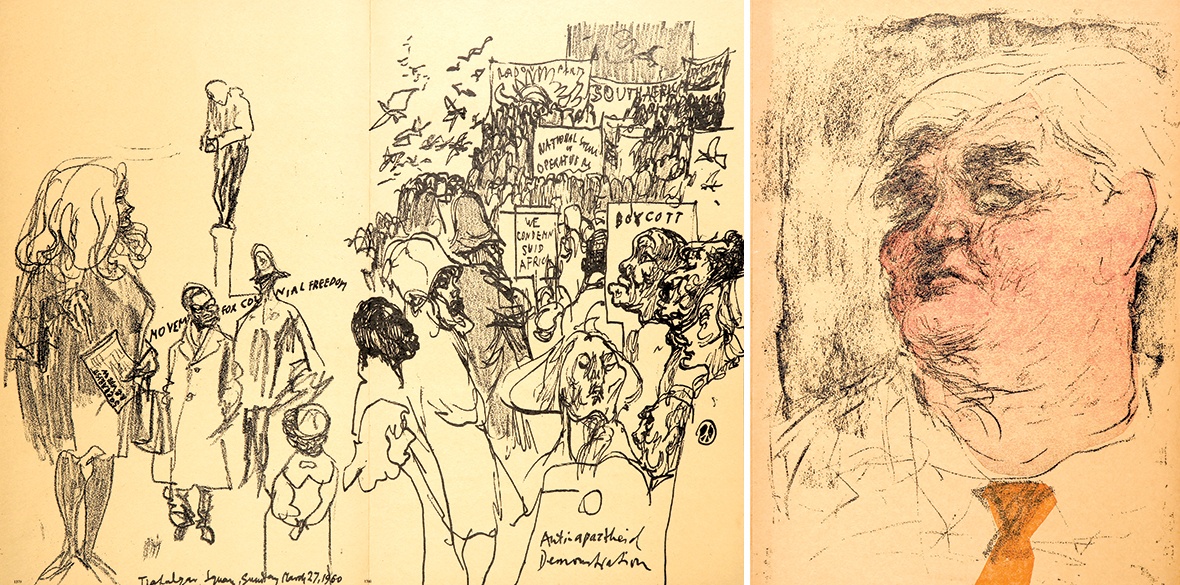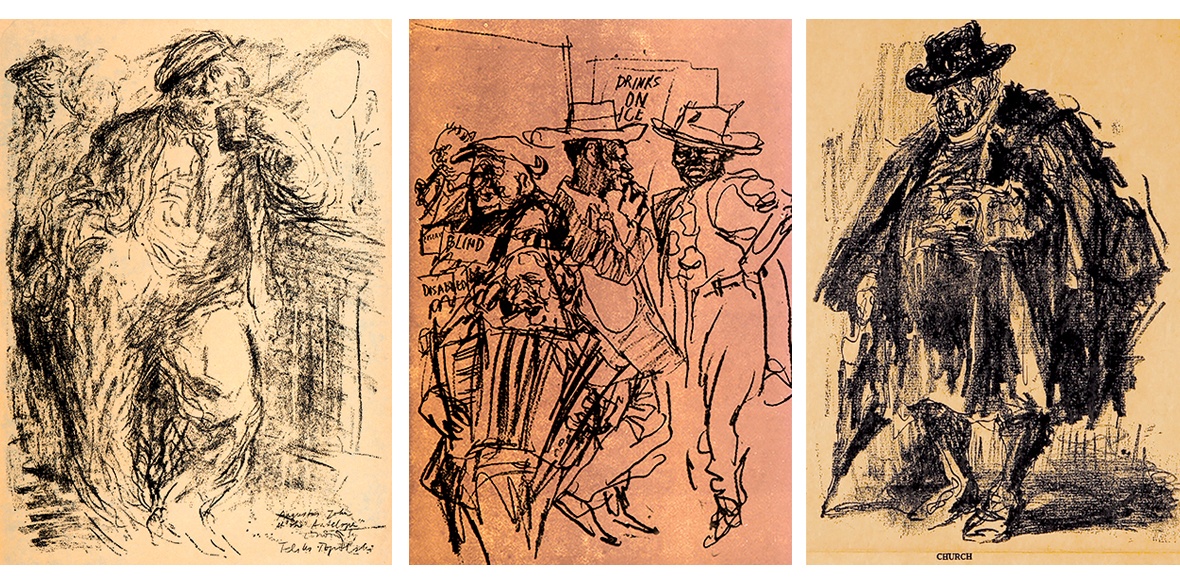This is the last article you can read this month
You can read more article this month
You can read more articles this month
Sorry your limit is up for this month
Reset on:
Please help support the Morning Star by subscribing here
Punks, Princes and Protests: The Chronicles of Feliks Topolski
Arch 158 Hungerford Arches / POSK Gallery, London
THERE is a feel of an impromtu informality of an artist’s studio in this show of Feliks Topolski’s sketches and drawings.
They fill the walls so high that accidental neck twisting is a distinct possibility — you have been warned.
But who was Topolski? He arrived in Britain in 1935 as a graphic correspondent of Wiadomosci Literackie/Literary News — Warsaw’s popular socio-cultural weekly — liked it here and just stayed on setting up a studio under one of the arches of the Hungerford Bridge in London where this exhibition is housed.
George Bernard Shaw offered an early accolade: “Perhaps the greatest of all impressionists in black and white,” and Topolski’s illustrations for his plays Geneva, In Good King Charles’s Golden Days (both 1939), and Pygmalion (1941) made Topolski a household name.
He was befriended by Graham Greene, Evelyn Waugh and Anthony Powell, all charmed by this resolute and fearless emigre.
During WWII as an accredited war artist for both Polish and British governments, he tirelessly sketched the Blitz, arctic convoys, the Soviet Union at war, the liberation of Bergen-Belsen, and later the Nuremberg trials.
He was also under contract to Picture Post magazine, which published many of his drawings.
As the curators of this modest exhibition point out: “Topolski was a master of the eyewitness impartial reportage. He lived [after WWII] at the centre of a new multicultural and contradictory Britain trying to form itself” — he served as a witness in the Oz obscenity trial, documented the anti-colonial movement, the visit to Britain of Malcom X, in 1965, two weeks before his assassination.
Topolski kept his pencil and charcoal dry and firmly on the pulse of post-WWII Britain with a swagger and abandon made possible by his mastery of the required techniques, which is abundantly evidenced here.
He was a great admirer of Tintoretto and, indeed, his sketches at times invoke the virtuosity and compositional daring of the Venetian.
The exhibition focuses on his own broadsheet, Topolski’s Chronicle, produced fortnightly using lithographic techniques from 1953 to 1979.
The run of 2,000 was available through subscription and its combination of images and texts by the same author make it a forerunner of the contemporary blog.
“I just drive hungrily with a pencil through life. I try to surrender to what I see and my hand readily walks on its own,” he said on one occasion.
Topolski’s view of the world and his responses to it were informed by his own identity — a melange of a Pole, a Jew and a naturalised Briton, a kind of “universal everyman.”
His delicate sketch of Nye Bevan is both affectionate and respectful — they were friends and Bevan was the formal “proposer” for granting Topolski British citizenship in 1947.
His Malcolm X exudes awe and steely determination, while the anti-apartheid demonstration is a black and white kaleidoscope of faces, slogans, agitation and resolve.
Elsewhere a glimpse is offered of a London performance of the Polish State Jewish Theatre, a homeless woman rests on a bench, head on a bag with her belongings, and in a comically absurd scene a “city gent/banker/etc” rides a fashionable Lambretta scooter with an umbrella precariously attached to its side.
There is more than a whiff of anti-clericalism in a delicious portrayal of an obese clergyman in the tradition of Honore Daumier, and so is the sketch of the Welsh painter Augustus John propping up a bar, pint in hand, at the Antelope pub in Belgravia.
The Chronicles were described by the Anglo-Irish writer Joyce Cary as: “The most brilliant record we have of the contemporary scene as seized by a contemporary mind.”
Feliks Topolski RA died in London on August 24 1989 at the age of 82 and is buried in Highgate Cemetery, north London.
Punks, Princes and Protests: The Chronicles of Feliks Topolski is open Thursday-Sunday, 12-6pm until July 15 at Topolski Studio Arch 158 Hungerford Arches Off Belvedere Road, London, and then transfers to POSK Gallery, 238 King Street, Hammersmith, from July 20 2023.
The exhibition has been organised as a partnership between the Granville-Skarbek Anglo-Polish Cultural Exchange and the Topolski Memoir charity. The Exchange is a public programming cultural forum, originated by POSK, aimed at celebrating contributions made by people of Polish heritage to British culture and society https://anglopolishculturalexchange.org.uk










